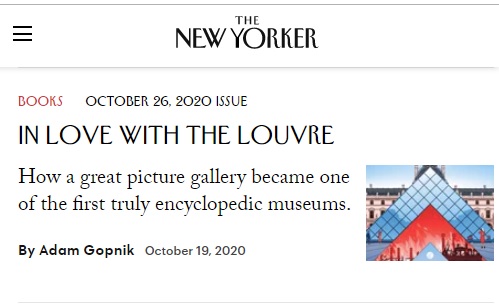"Rock music from car . . ."
Friday, December 4, 2020
Here’s to Efficient Packing!
Devil Music … Now in Infernovision!
“DEVIL – MUSIC
20 pages of incidental music written at school
for G. K. Chesterton’s play MAGIC
by D. Coxeter.”
See also other posts now tagged Infernovision.
Thursday, December 3, 2020
A Veritable Frame
A search in this journal for “Jean Brodie” suggests a review —
“A professor is all-powerful, Gareth liked to tell his daughter, he puts
‘a veritable frame around life,’ and ‘organizes the unorganizable.
Nimbly partitions it . . . .'”
— Review of Special Topics in Calamity Physics , Aug. 13, 2006
For Alison Lurie (Sept. 3, 1926 — December 3, 2020)
“Once upon a time there was a classroom.”
— Zenna Henderson, “Loo Ree”
See as well other posts now tagged Lurie.
Pilgrim’s Progress
Bunker Bingo
See as well 5×5, The Matrix of Abraham, and Deutsche Schule Montevideo .

“If you have built castles in the air,
your work need not be lost;
that is where they should be.
Now put the foundations under them.”
— Henry David Thoreau
Brick Joke
The "bricks" in posts tagged Octad Group suggest some remarks
from last year's HBO "Watchmen" series —
Related material — The two bricks constituting a 4×4 array, and . . .
"(this is the famous Kummer abstract configuration )"
— Igor Dolgachev, ArXiv, 16 October 2019.
As is this —
 .
.
The phrase "octad group" does not, as one might reasonably
suppose, refer to symmetries of an octad (a "brick"), but
instead to symmetries of the above 4×4 array.
A related Broomsday event for the Church of Synchronology —
Tuesday, December 1, 2020
Beach Rocks
"The Beach is a 1996 novel by English author Alex Garland." — Wikipedia
Windows lockscreen today —

Another part of the lockscreen, later . . .

Related* mystical remark on a legendary artifact —
Animation adapted from a legendary diagram —
* The "9" and "16" may be viewed as referring to areas —
both above and below the hypotenuse — bordering a
3-4-5 triangle illustrating Euclid's proposition I.47.
Annals of Subliminal Typography
Projects
The tinfoil link in the previous post suggests a review.
The Wikipedia article on the Harvard Psilocybin Project links to . . .
Beach Tips from Microsoft

Windows lockscreen, morning of December 1, 2020.
Related security tips. . . See tinfoil. “We all know the song.”
Image related to last night’s post “Time Class” —
Monday, November 30, 2020
Space Exploration
Sunday, November 29, 2020
De Gustibus
” . . . one person’s favorite comedy might be a wrenching drama to someone else.”
— The Atlantic promotional email by film critic David Sims on Saturday,
November 28, 2020, 11:37 AM ET.
See as well “Star Quality: Mirror Guy” (this journal, 12:30 PM ET on Saturday,
November 28, 2020, the reported date of death for Darth Vader actor
David Prowse).
Sunday Morning in a Cartoon Graveyard
For the Dr. Seuss School of
Neuropsychopharmacology —

From the school itself —

Related material — Pilgrim's Progress in this journal and . . .
an image from Log24 on December 8, 2012 —
See as well "To Think That It Happened on Prescott Street"
and related posts.
Saturday, November 28, 2020
Coordinates of the Damned
Star Quality: “Mirror Guy”
A Poster for Doctor Manhattan
A nostalgia pill for Watchmen fans.
For Harvard Watchmen fans, a link to 2346:
http://m759.net/wordpress/?p=2346 —

To Thine Own Self Be Trieu
Friday, November 27, 2020
Unreality in Oz
Reality at Northfield
See also, in memory of a Northfield, Minnesota, professor
of mathematics who reportedly died on October 28 —
Posts tagged Olaf Gate.
Latinx Critique

Perhaps Affleck's rendition of "Aquellos Ojos Verdes " will help.
See Hollywood Moment (January 22, 2018).
Thursday, November 26, 2020
Harvard Psychedelic Club vs. Harvard Alcoholic Club
For the title, see the previous post as well as Prescott Street
and Psychedelic Club in this journal.
Some related art —

“Standing in the Way” — NBC News Today

“This man may turn you green with envy” — TIME cover, 1/16/1989.
See as well the previous post, with some art
from earlier in January 1989.
Epiphany Search

Related material — The “box” version of I Ching hexagram 46,
“pushing upward,” in the lower right corner of the following art,
dated 1/6/89 (Epiphany 1989) —
Wednesday, November 25, 2020
Requiem for a Jewel
See this evening’s New York Times obituary for the figure below,
who reportedly died today.
IAS is the Institute for Advanced Study at Princeton, NJ.
For more IAS rhetoric, see yesterday evening’s post on
The Building-Block Metaphor.
Between Passion and Obsession, There Is . . .

Related material — See Cleavage .
Tuesday, November 24, 2020
Monday, November 23, 2020
In the Garden of Adding
“In the garden of Adding,
Live Even and Odd….”
— The Midrash Jazz Quartet in
City of God , by E. L. Doctorow

Related material — Schoolgirls and Six-Set Geometry.
Bonding


See also another item from the above phosphodiester bond date —
September 21, 2015 —
A song for King's band, The Rock Bottom Remainders —
"Hey, good-lookin', whatcha got cookin'?"
Director’s Cut: The 6 and the 9
The previous post, “A Fine Knife Edge,” suggests . . .
A Fine Knife Edge
“Any theory or finding, especially if controversial,
always rests on a fine knife edge….”
“It is a truism that nothing is sadder than
the murder of a beautiful theory by a nasty little fact.”
— Statements by one Irving Rothchild in his article
“Induction, Deduction and the Scientific Method”
See as well this journal on the above Nasty Little Man date —
“compelling formula” vs. “intricate complexity.”
Sunday, November 22, 2020
The Galois-Fano Plane
A figure adapted from “Magic Fano Planes,” by
Ben Miesner and David Nash, Pi Mu Epsilon Journal
Vol. 14, No. 1, 1914, CENTENNIAL ISSUE 3 2014
(Fall 2014), pp. 23-29 (7 pages) —
Related material — The Eightfold Cube.
Update at 10:51 PM ET the same day —
Essentially the same figure as above appears also in
the second arXiv version (11 Jan. 2016) of . . .
DAVID A. NASH, and JONATHAN NEEDLEMAN.
“When Are Finite Projective Planes Magic?”
Mathematics Magazine, vol. 89, no. 2, 2016, pp. 83–91.
JSTOR, www.jstor.org/stable/10.4169/math.mag.89.2.83.
In Memory of . . .
An Orison for Anthony
Conceptual Art
Saturday, November 21, 2020
Vulture Culture
An image from this journal on August 26, 2020 —
From a related article —
“Cohen, of course, was unavailable for comment,
having died the day before the 2016 election….”
— Chris Willman in Variety , Aug. 27, 2020
Various sources say Cohen died in his sleep after
“a fall in the middle of the night on November 7 (2016).”
A related Log24 post —
A Fork for Yogi
Note for the Church of Synchronology —
See also this journal on the “Songs for the Deaf” release date:
August 27, 2002.
Friday, November 20, 2020
Breadcrumb from Leni for The Club Dumas
Thursday, November 19, 2020
“A Word, a Corpse”
Alex Garland’s grandfather, P. B. Medawar, on Bullshit
From a review of Teilhard de Chardin’s
The Phenomenon of Man:
| “It would have been a great disappointment to me if Vibration did not somewhere make itself felt, for all scientific mystics either vibrate in person or find themselves resonant with cosmic vibrations….” |
See as well . . .
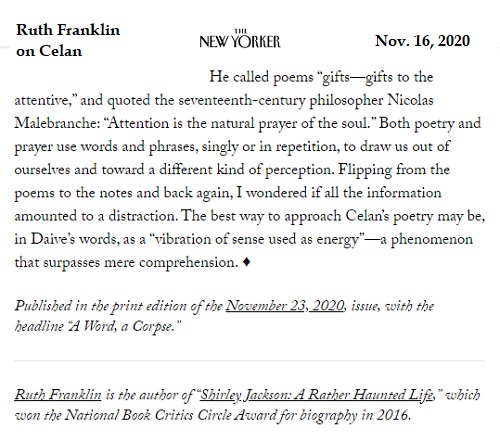
Breadcrumbs from a Cartoon Graveyard
Breadcrumbs for a Cartoon Graveyard

Spears reportedly died on Nov. 6. See this journal on that date.
Set Design and the Schoolgirl Problem
Wednesday, November 18, 2020
La Chanson Fatale
Harold Edwards, a founding co-editor of The Mathematical Intelligencer ,
reportedly died at 84 on Tuesday, Nov. 10, 2020.
Images from this journal on that date —

"Surprise Party" revisited —

A Philippine meditation by Alex Garland quoted here on May 6, 2010 —
Tuesday, November 17, 2020
“To Illustrate My Last Remark . . .”
The previous post contrasted recent bullshit of Louis Menand
with some non-bullshit at Wikipedia.
But Wikipedia is hardly blameless —

The text on the left is bullshit. The illustration on the right is not.
Field Guides
Monday, November 16, 2020
Social Icons
A death from Thursday, November 12, 2020 —
Other physics-related remarks from November 12
appear in this evening’s previous post.
The Garland Modelling
Sunday, November 15, 2020
In Memoriam
https://www.straitstimes.com/singapore/
ntuc-learninghub-ceo-kwek-kok-kwong-dies-aged-53
“Mountain, not fountain.” — Nabokov
Checkout at 11:23
Related material for comedians — last year’s 11/23
and Perlis in this journal.
Saturday, November 14, 2020
The Grossinger Interview
The following image was suggested by today’s
New York Times obituary of Joanna Harcourt-Smith
and by earlier Log24 posts now also tagged Grossinger.
For some background, see a book that reportedly
was published on Devil’s Night (October 30) 1997 —
The interview date above suggests some related material
for students of bullshit and for the Church of Synchronology —
Leary-Related Death
To Think That It Happened on Prescott Street
Or: Geometric Logic Continued
Part I: Mystic Twaddle —
Part II: Meanwhile, on that same date —
Part III: Back at Harvard —
A link from the above post, infra —
“Some Harvard-related material — See Leary and 6 Prescott .”
Friday, November 13, 2020
A Dyad for Ariana
From The New Yorker yesterday —
“The professor and the politician are a dyad of perpetual myth.”
Deep State, Deep Mind, Deep Structure
. . . .
“In Weber’s hands, the professor and the politician
are not figures to be joined. Each remains a lonely hero
of heavy burden, sent to ride against his particular foe:
the overly structured institution of the modern mind,
the overly structured institution of the modern state.”
See also Chomsky in this journal.
Raiders of the Lost Dorm Room
“That really is, really, I think, the Island of the Misfit Toys at that point.
You have crossed the Rubicon, you jumped on the crazy train and
you’re headed into the cliffs that guard the flat earth at that time, brother,”
said Rep. Denver Riggleman, a Republican congressman from Virginia,
in an interview."
— Jon Ward, political correspondent, Yahoo News , Nov. 12, 2020
The instinct for heaven had its counterpart:
The instinct for earth, for New Haven, for his room,
The gay tournamonde as of a single world
In which he is and as and is are one.
— Wallace Stevens, "An Ordinary Evening in New Haven"
Related material for comedians —
See as well Sallows in this journal.
“There exists a considerable literature
devoted to the Lo shu , much of it infected
with the kind of crypto-mystic twaddle
met with in Feng Shui.”
— Lee C. F. Sallows, Geometric Magic Squares ,
Dover Publications, 2013, page 121
Thursday, November 12, 2020
Storylines
Related material for comedians —
Thursday, August 21, 2014
NoxFiled under: Uncategorized — m759 @ 1:00 AM ( A sequel to Lux ) “By groping toward the light we are made to realize — Arthur Koestler, The Call Girls: A Tragi-Comedy ,
Robin Williams and the Stages of Math i) shock & denial A related description of the process — “You know how sometimes someone tells you a theorem, — Tom Leinster yesterday at The n-Category Café |
See as well . . .
Damonizing Your Opponent
Wednesday, November 11, 2020
An Ordinary Evening in New Haven


Prof. Coleman Silk introducing freshmen to academic values
“The communication
of the dead is tongued with fire
beyond the language of the living.”
— T. S. Eliot, Four Quartets
Qube
The new domain qube.link forwards to . . .
http://finitegeometry.org/sc/64/solcube.html .
More generally, qubes.link forwards to this post,
which defines qubes .
Definition: A qube is a positive integer that is
a prime-power cube , i.e. a cube that is the order
of a Galois field. (Galois-field orders in general are
customarily denoted by the letter q .)
Examples: 8, 27, 64. See qubes.site.
Update on Nov. 18, 2020, at about 9:40 PM ET —
Problem:
For which qubes, visualized as n×n×n arrays,
is it it true that the actions of the two-dimensional
galois-geometry affine group on each n×n face, extended
throughout the whole array, generate the affine group
on the whole array? (For the cases 8 and 64, see Binary
Coordinate Systems and Affine Groups on Small
Binary Spaces.)
The Work of a Comedian
Flashback to Sept. 7, 2008 —
Change for Washington:
For the details, see yale.edu/lawweb:
“As important to Chinese civilization as the Bible is to Western culture,
the I Ching or Book of Changes is one of the oldest treasures of
world literature. Yet despite many commentaries written over the years,
it is still not well understood in the English-speaking world. In this
masterful [sic ] new interpretation, Jack Balkin returns the I Ching to
its rightful place….

Jack M. Balkin
Jack M. Balkin is Knight Professor of Constitutional Law
and the First Amendment at Yale Law School, and
the founder and director of Yale’s Information Society Project.
His books and articles range over many different fields….”
Tuesday, November 10, 2020
To the Lighthouse


Windows lockscreen, 9:05 PM ET Tuesday, November 10, 2020
Monday, November 9, 2020
Gospel Thriller
” He say ‘One and one and one is three’ ” — Song lyric
Related theology in memory of the late Paul Shanley —
“Q is for Quelle.” (November 7, 2020)
“Big Media, Big Money, Big Tech”
Related material —


See as well the recent post Annals of Artspeak and the related
Microsoft lockscreen photo credit —
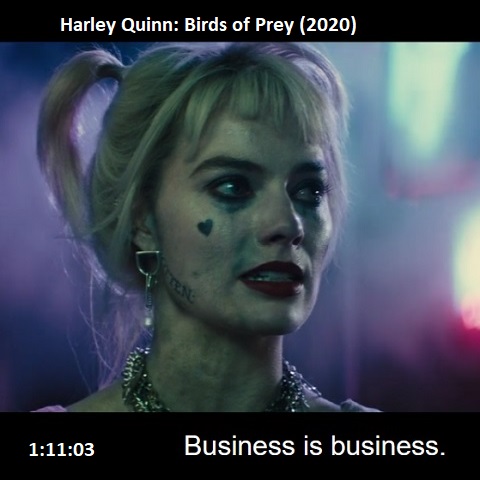
Geometric Logic
“Strawberry Fields Forever” — Song title
“Let me take you down
’Cause I’m going to Strawberry Fields
Nothing is real
And nothing to get hung about… ” More
“Ah, but the strawberries, that’s, that’s where I had them,
they laughed at me and made jokes, but I proved
beyond the shadow of a doubt, and with geometric logic,
that a duplicate key to the wardroom icebox did exist,
and I’ve had produced that key if they hadn’t pulled
the Caine out of action. I, I know now they were only
trying to protect some fellow officer. … Naturally, I can
only cover these things from memory. If I left anything out,
why, just ask me specific questions and I’ll be glad to
answer them, one by one.” — monologuedb.com
See also The Solomon Key .
Who Was . . . Alex Trebek?
From David Corfield today at The n-Category Café —
“Collingwood writes in his Autobiography :
… a logic in which
the answers are attended
and the questions neglected
is a false logic.”
(An Autobiography , 1939, p. 31)
Sunday, November 8, 2020
Furious Fancies

An image from “Force Field of Dreams” (Sept. 4, 2020)
Local
Midrash for leftists —
The time of this journal’s previous post was 9:56
(AM, ET, Sunday, Nov. 8, 2020).
“All time is local time” — Richard Grossinger,
The Night Sky: Soul and Cosmos
“You can’t fool me, i’m stickin’ to the union”
— Adapted song lyric
“On second thought, maybe you can fool me.”
See Richard Grossinger in Wikipedia.
Local
“All politics is local.”
— Saying attributed to the late Tip O’Neill
“All time is local.”
— Concept attributed to the late Albert Einstein
Related material —

See also Timequake in this journal.
Saturday, November 7, 2020
Q is for Quelle
Compare and contrast (data from Amazon.com) —

Update of 9:47 PM ET the same day —
Logo of the above publisher:
For remarks from the most recent equinox,
see posts tagged Abrams Eight.
Friday, November 6, 2020
Fuse
From a link in the previous post —
From Log24 on October 25, 2013 —
Rhetorical questions by art critic Michael Glover—
“Has this kind of abstraction to do with ideas
of the spiritual? Are we supposed to see behind
what we have here some kind of evidence of
superhuman energies at work in the universe?
Is this some kind of manifestation of the force
that through the green fuse drives the flower—
to quote a line from Dylan Thomas?”
Rhetorical answer —
“To Illustrate My Last Remark . . .”
Breadcrumbs
“keywords”:
[“Donald Trump”,”conspiracy theory”,”qanon”],
“datePublished”:
“2020-09-29T16:56:00+0000”,
“dateModified”:
“2020-10-18T15:01:55+0000”
— CBS News … “Use The Source , Luke.”
“Black velvet in that little boy’s smile”
Wednesday, November 4, 2020
The Summerfield Prize . . .
The author of A Piece of Justice , a 1995 novel about mathematics
and quilts, has died.

Walsh died on St. Luke's Day. Cf. Luke in this journal.
Devil’s Night Game
From Devil’s Night Art Notes —
“Create the largest colour fields and win!“

The MOZAA (pronounced Mo’s-A-A ? ) game was reportedly
published on April 1, 2013. A note from this journal on that date —
Tuesday, November 3, 2020
Illuminati Hymn
For the Church of Synchronology —
This journal on the above YouTube date — June 21, 2018 —
had posts now tagged Mnemonic Model.
Notes towards the Redefinition of Culture
An online newspaper page dated Nov. 2, All Souls' Day,
displays a story from Tuesday, Oct. 20, about an upcoming
religious event at a church named for Saint Luke.
Luke's feast day was October 18, the date of death for
a Hollywood publicist —
A gong show I prefer to the above church version —

Monday, November 2, 2020
Q Bits
The new domain name q-bits.space does not refer to
the q in “quantum ,” but rather to the q that symbolizes
the order of a Galois field .
See the Wikipedia article “Finite field.”
The “space” suffix refers to a web page on geometry.
Sunday, November 1, 2020
Art Theory
“If you have built castles in the air, your work need not be lost;
that is where they should be. Now put the foundations under them.”
— Henry David Thoreau
Between, or: Interality Illustrated (according to Sherald)
“We live in between the lines;
in between the cracks . . . .
That’s where the bonds are formed. ”

Ariana’s Erdős number . . . 34 + 35

Related game —

Conjured Vision: The Sherald Herald
“… Sherald has somehow conjured a vision ….
… to see her, through Sherald’s vision:
as a herald of success.”
— Doreen St. Félix, February 13, 2018
“Remember me to Herald Square.”






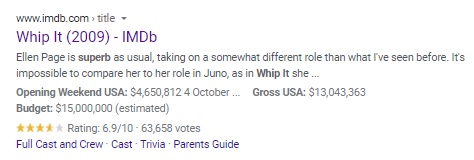

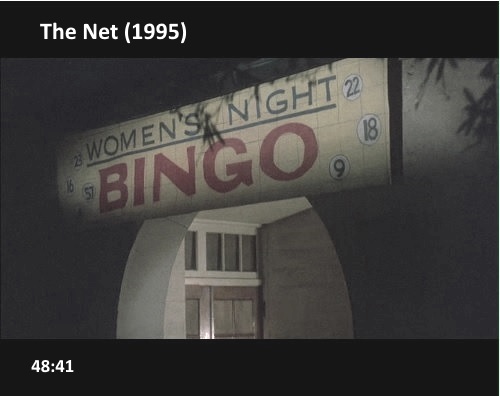

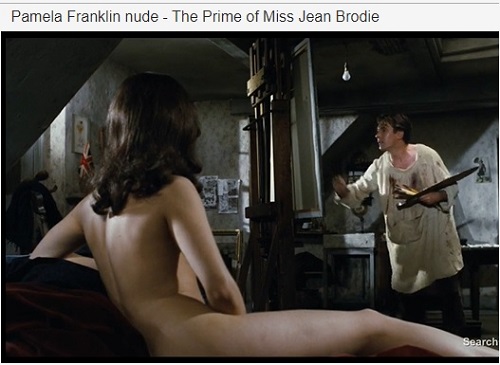












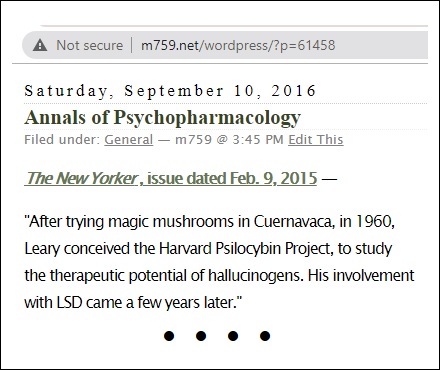





























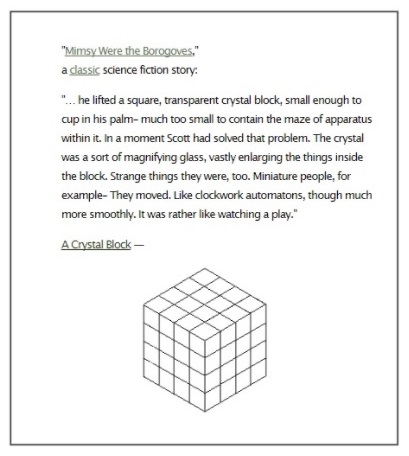















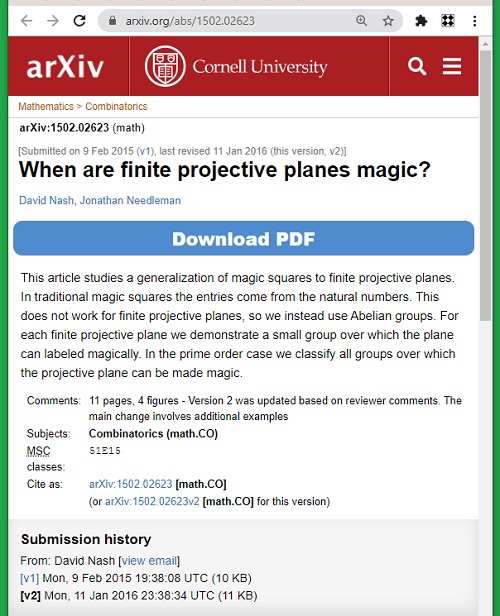
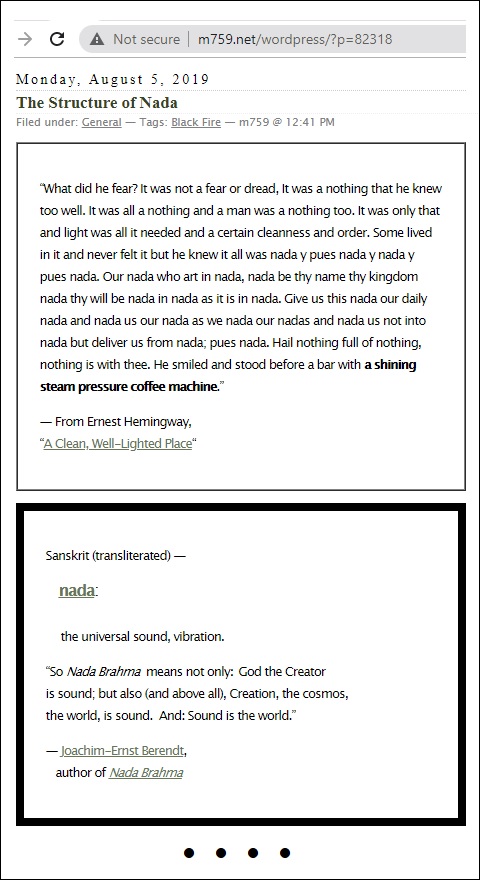






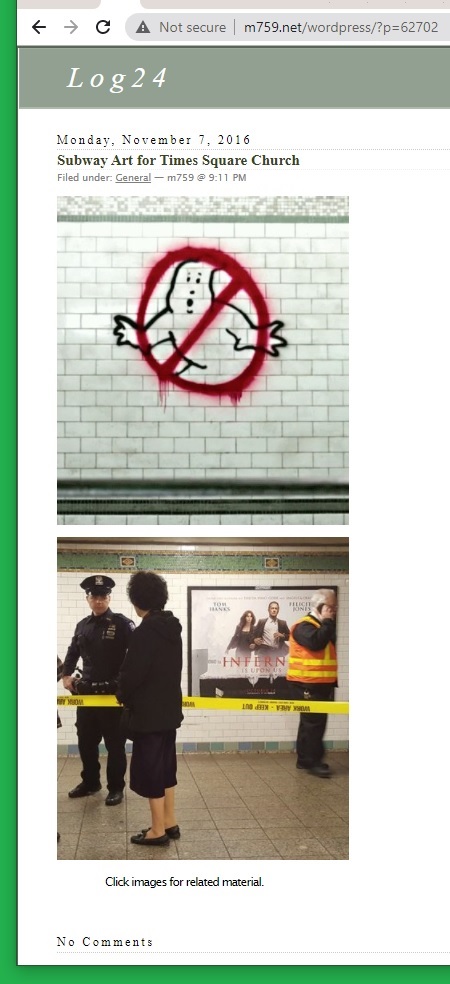





















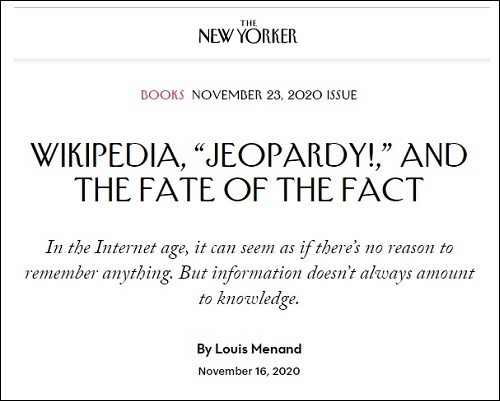
















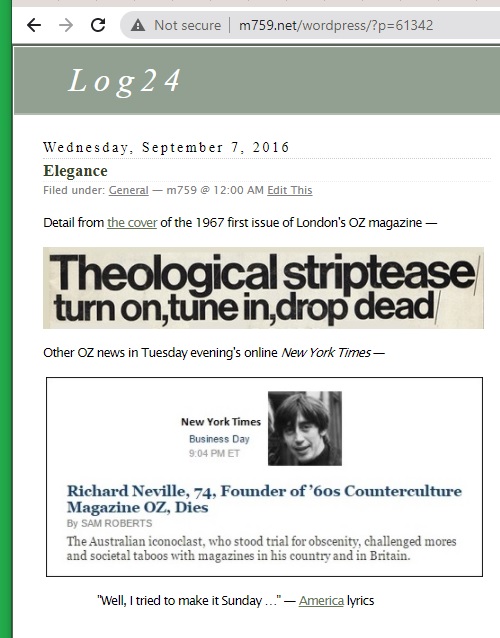



















 .
.










